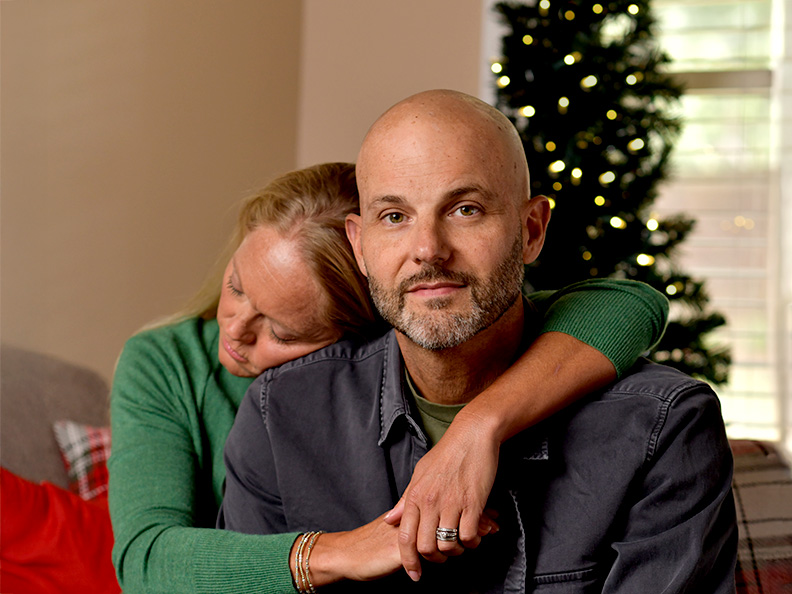Your gift is 100% tax deductible
Getting Called Back After a Mammogram
Getting called back after a screening mammogram is fairly common, and it doesn’t mean you have breast cancer. In fact, fewer than 1 in 10 women called back for more tests are found to have cancer.
Often, getting called back after a mammogram just means more mammograms or other tests (such as an ultrasound) need to be done to get a closer look at an area of concern.
Why might I be called back?
You could be called back after your mammogram because:
- The pictures weren’t clear or didn't show some of your breast tissue, so they need to be retaken.
- The radiologist (doctor who reads the mammogram) sees something suspicious, such as calcifications or a mass (which could be a cyst or solid mass).
- The radiologist sees an area that just looks different from other parts of the breast.
If you do need more tests, ask your doctor about how quickly these tests can be scheduled. This can vary based on a number of factors, such as how busy the testing centers are in your area.
Getting called back is more common after a first mammogram, or when there’s no previous mammogram to compare to the new mammogram. It's also more common in women who haven’t gone through menopause.
Sometimes when more mammograms are taken of an abnormal-looking area, or the area is compressed more, it no longer looks suspicious. In fact, most often the additional images show the finding isn't cancer.
What will happen at the follow-up appointment?
- You’ll likely get another mammogram called a diagnostic mammogram. (Your previous mammogram was called a screening mammogram.) A diagnostic mammogram is done just like a screening mammogram, but more pictures are taken so that any areas of concern can be looked at more closely. A doctor called a radiologist will be on hand to advise the technologist (the person who operates the mammogram machine), to be sure they have all the images that are needed.
- You may also get another imaging test, such as an ultrasound of the breast, which uses sound waves to make pictures of the inside of your breast at the area of concern.
You will most likely be given the results of your tests during the visit. You might be told one of the following:
- The suspicious area on the mammogram turned out to be nothing to worry about, and you can return to your normal mammogram schedule.
- The area is probably nothing to worry about, but you should have your next imaging test (mammogram and/or ultrasound) sooner than normal – usually in about 6 months – to watch the area closely and make sure it's not changing over time.
- The area could be cancer, so you will need a biopsy (see below) to know for sure.
You’ll also get a letter with a summary of the findings that will tell you if you need more tests and/or when you should schedule your next mammogram.
What if I need a biopsy?
During a breast biopsy, small pieces of breast tissue are removed and checked for cancer under a microscope. Even if you need a biopsy, it doesn’t mean you have cancer. Most biopsy results are not cancer, but a biopsy is the only way to find out.
There are different types of breast biopsies, some of which are done using a small, hollow needle and some that are done through a cut in the skin. The type you have depends on things like how suspicious the area looks, how big it is, where it is in the breast, other medical problems you might have, and your personal preferences.
How can I stay calm while waiting?
Waiting for appointments and the results of tests can be frightening, especially if you were told the results of your first mammogram weren’t normal. You might have strong emotions, such as disbelief, anxiety, fear, anger, or sadness during this time. Here are some things to remember:
- It’s normal to have these feelings.
- Most often, breast changes are not cancer and are not life-threatening.
- Talking with a loved one or a counselor about your feelings may help.
- Talking with other women who have been called back after a mammogram may help.
- The American Cancer Society is available at 1-800-227-2345 around the clock to answer your questions and provide support.
What if it’s cancer?
If you do have breast cancer and you’re referred to a breast specialist, use these tips to make your appointment as useful as possible:
- Make a list of questions to ask.
- Take a family member or friend with you. They can serve as an extra pair of ears, take notes, help you remember things later, and give you support.
- Ask if you can record the conversations. You might also want to take notes.
- If someone uses a word you don’t know, ask them to spell it and explain it.
- Ask the doctors or nurses to explain anything you don’t understand.
- Written by
- References

The American Cancer Society medical and editorial content team
Our team is made up of doctors and oncology certified nurses with deep knowledge of cancer care as well as editors and translators with extensive experience in medical writing.
Helvie MA, Patterson SK. Chapter 11: Imaging Analysis: Mammography. In: Harris JR, Lippman ME, Morrow M, Osborne CK, eds. Diseases of the Breast. 5th ed. Philadelphia, Pa: Lippincott Williams & Wilkins; 2014.
Last Revised: May 17, 2022
American Cancer Society medical information is copyrighted material. For reprint requests, please see our Content Usage Policy.
American Cancer Society Emails
Sign up to stay up-to-date with news, valuable information, and ways to get involved with the American Cancer Society.



